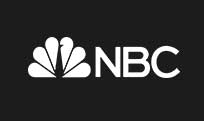MONEY MATTERS: Too Much Cash in Checking?
Although having too much cash in your checking account isn’t something that gets talked about very much, it’s more common with small-business owners than you would think. That’s because this is a group that is good at earning and saving money, the exact method that enabled them to branch off on their own in the first place.
But even though having a lot of cash in your checking account is a symbol of financial success, it’s also a bit of a liability. That’s because of opportunity cost. Being in cash means your capital is not in an interest bearing account or security. Think about it like this. Do you ever take a day off? Or stay home from work? No, of course not; so why let your cash just lounge around in your checking account?
If the answer to that question is a desire to be conservative, there are still plenty of moves you can make to pick up a return while taking on very little risk. Just like you don’t have to choose between your arm and your leg, you don’t have to choose between risk and a return.
So on that note, here are 7 low-risk moves that will help you pump up your bottom line.
Savings Account
I know a savings account isn’t very sexy, but at least you’ll pick up a little more return on your cash than the checking account. The process here is easy too, sometimes as simple as mouse click on your online banking platform. Savings accounts are also good for liquidity, where you can access you cash any time with no early withdrawal penalty.
Certificate Deposit (CD)
This isn’t the most glamorous destination either, but at least you’ll be picking up and infinitely bigger return than you would if your cash was sitting in a checking account. The one thing you potentially sacrifice with a CD though is liquidity, with some potentially requiring period lockups. If you could potentially need your cash in an emergency situation this is always something to think about.
US Treasury Bonds and Notes
Moving up the ladder in both yield and risk, you can shift cash from a checking account into a brokerage account and give yourself access to U.S. Treasuries, pushing your yield above 3% with a little more risk in hand. Treasury’s are basically just bonds from the Federal government and are actually considered to be the most riskless assets in the world. Although that is a complicated conversation due to the federal balance sheet, the market still treats Treasuries like they are sacred.
Municipality Bonds
Muni’s are also government bonds, but of the local variety. Yields on Muni’s differ depending on underlying credit quality, but the biggest thing any investor needs to know about Muni’s is that they are 100% tax deferred. That is something that is calculated into the price and yield, of course, but if any investor is searching for a robust tax shelter, this is a good place to be looking.
Investment Grade Corporate Bonds
Moving into corporate bonds, you will see your yields jump, usually from 4%-6%, but you will also see a little more volatility. But bigger picture, the private sector is incredibly strong right now, back to record profits from 2007 on three strong years of economic growth. Corporate balance sheets are also strong, providing the private sector with one more leg of security.
High-Yield Corporate Bonds
The other category of corporate bonds is high yield, with the group regularly paying out 6% annual yields or more. No doubt that is a pretty heady return, but high-yield is also knows to be volatile, so this is a bit of a departure from a regular savings account or CD. But none the less, being aware of these high-yielding securities is a necessity and potentially part of your overall investment strategy.
International Bonds
And finally, we have international bonds. The key differentiator in this space is between emerging-market bonds from countries like Brazil and India and developed economies like Japan and the Euro zone. The emerging market bonds will most likely be a little more volatile, but as always, investors are rewarded with more yield.
The Big Picture
So as you can see there are a number of relatively simple moves you can make to shift cash out of your checking account and into an interest-bearing account or securities. And in an environment where yields are painfully low, picking up a 2%-3% return on your capital puts you ahead of the game.
MONEY MATTERS is a weekly column on the Retail Minded Blog that is contributed by Michael Vodicka, founder of boutique financial consulting firm the Vodicka Group. MONEY MATTERS is Retail Minded’s way of supporting independent store owners with all their financial concerns, real life needs and everyday issues both in and out of their stores. You can find MONEY MATTERS every Wednesday on RetailMinded.com as well as in each issue of Retail Minded Magazine.














